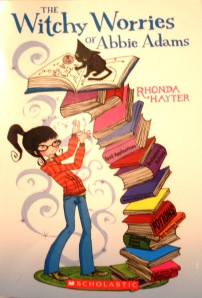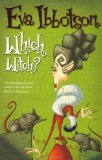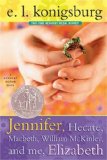 Today I have a giveaway for you – The Witchy Worries of Abbie Adams. Abbie is a fifth grader who also happens to be a witch. In fact, her whole family has magical powers. And Abbie’s certainly got her hands full. She’s got to look out for her often troublesome little brother, keep her secret from her best friend, learn to manage her school work, keep herself out of magical trouble and then, oh yeah, there’s this adorable little black kitten living at her house who’s actually an enchanted boy! But things really start to get tricky once Abbie discovers the boy’s true identity.
Today I have a giveaway for you – The Witchy Worries of Abbie Adams. Abbie is a fifth grader who also happens to be a witch. In fact, her whole family has magical powers. And Abbie’s certainly got her hands full. She’s got to look out for her often troublesome little brother, keep her secret from her best friend, learn to manage her school work, keep herself out of magical trouble and then, oh yeah, there’s this adorable little black kitten living at her house who’s actually an enchanted boy! But things really start to get tricky once Abbie discovers the boy’s true identity.
The book is written in a very conversational tween speak tone. I think young girls will find this really appealing. There’s even a little mention of Hogwarts slipped in which should also draw in Harry Potter fans. Overall, the vocabulary is pretty challenging and Abbie herself acknowledges it: readers are told to look up penchant (“I had to” admonishes Abbie); a drama teacher who is throwing around words like thespian, ascertained and amply prompts Abbie to tell us, “I’ve never heard her use a ten-cent word when a five-dollar one would do.” Parents will like that Abbie manages to throw some nuggets of historical information at the reader as well. Also, despite the tween tone, Abbie’s really close with her mom and dad, which is a great thing to see in a book.
So how can you get a copy for your witchy ones? Leave me a comment about your favorite book featuring witches or wizards or a comment about who you’d like to win this for. Make sure to include a way for me to get in touch with you! I’ll choose the winner by a random number generator. The contest is open until midnight Friday, October 29th EST. And I’m so sorry but at this point I can only ship within the USA. Good luck!
Sex, Nudity, Dating – There is a mention of how Benjamin Franklin likes to impress the ladies. Abbie’s Aunt Sophie appears in a gown that showed “kind of a lot of skin” which then makes a teenage boy’s eyes nearly pop out of his head. Aunt Sophie zaps Abbie’s mom into a dress that shows “kind of a lot” of her chest, so Abbie’s mom zaps it back as soon as she notices.
Profanity – “darn” used several times, “stupid,” “heck,” and Abbie tells us that a man uses “some words that I know my mother would rather I had never even heard.”
Death, Violence and Gore – Munch tries to eat his teacher when he’s morphing into a wolf. Abbie feels like kicking her brother. We learn that a boy from the olden days was “thrashed” by his father. The possibility that the little cat would have been given to a shelter and subsequently put to sleep is raised, but only very briefly. There is some biting. Two brothers pound each other. An evil man sets witch booby traps and causes an older witch to collapse and Abbie’s father to bleed.
Drugs, Alcohol and Smoking – In a play of Alice in Wonderland the caterpillar smokes.
Frightening or Intense Things – While there’s a definite villain, there’s nothing scary here.





